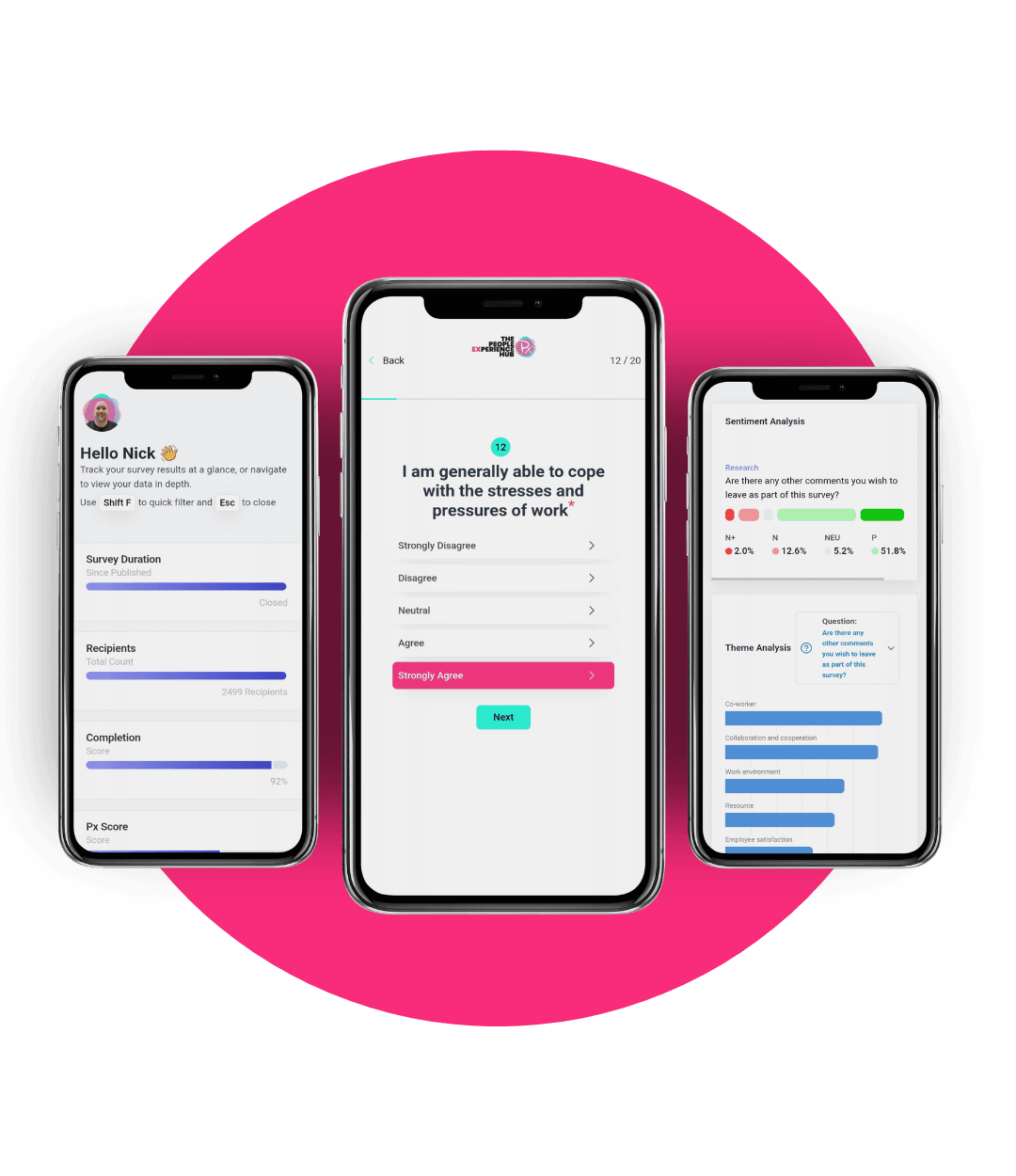Advocacy: Understanding the employee net promoter score (eNPS) with Px3™
We talk to a lot of people who are interested in our approach to eNPS (Employee net promoter score) and why we think there is a better way than the old school method of understanding whether your people would recommend you as a great place to work.
What is eNPS?
eNPS is a variation on NPS (net promoter score), which was introduced in 2003 by Fred Reichheld from Bain & Company, where NPS asks consumers, “How likely are you to recommend (product/organisation) to your friends or family?” eNPS asks “Would you recommend this company to your friends and family as a great place to work?”
Great question, not-so-great scoring method
We are absolutely on board with asking employees whether they would recommend their company as a great place to work, it just makes sense and we see this as a positive people outcome.
But the old school scoring method, well…the best description I have heard calls the results that eNPS creates ’Analytics Theatre’. It describes it as a model that produces drama, not something that helps you think about your people or to see how you are improving (or not).
eNPS uses the same 11-point scale (0 to 10) as NPS, and then responses are broken down into detractors, passives and promoters.
However, there has been some criticism of this approach in recent years due to the way it can produce those dramatic scoring swings and doesn’t lean into some of the more basic principles of asking survey questions – for example; we know that evidence shows that people are better with a scale shown as text than one where they have a scale of 0 to 10 for example.
We recommend asking the question alongside your other engagement questions using our proven 5-point scale.
This allows us to deliver better analysis and benchmarking and also gives you the power of using our Px3™ framework to explore the influence of the work environment on people outcomes.
Let’s break this down as an example:
How does old-school eNPS work?
First, eNPS asks for a rating from 0 to 10, as below. It then splits people into three groups: Detractors, Passives and Promoters and provides a score using the following calculation:
Number of Promoters minus number of Detractors divided by total respondents multiplied by 100

Where is the drama?
Let us assume you have 10 people take part who all score you a 3

- eNPS Score = -100% (Minus 100%)
- Average score = 3
You implement organisation-wide change, and you ask the question again, and everyone scores you a 5:

- eNPS Score = -100% (Minus 100%) (No change)
- Average score = 5 (Improved by 2 percentage points)
You implement organisation-wide change, and you ask the question again, and everyone scores you a 8:

- eNPS Score = 0% (A swing of 100 percentage points but still only 0%!)
- Average score = 8 (Improved by 5 percentage points since you first asked)
So, we have a few problems here that you may have noticed:
- eNPS is terrible at showing improvement over time
- The score does not make that much sense (how would you explain this to a group of employees?)
- It creates dramatic results (hence the term Analytics Theatre)
Comparing eNPS across your business
Another weakness in the eNPS scoring methodology is when trying to look across your organisation to see where to focus your efforts, and to give managers clarity on their own team.
The example below shows two teams:

Team 1 has an eNPS score of -100% (Minus 100%)
Team 2 has an eNPS score of -100% (Minus 100%)
We can see here that Team 1 has a pretty bad score and will possibly need a lot of your attention, while Team 2 are, while not outstanding, doing OK.
But...both have the same eNPS score of -100% (Minus 100%)
In other words, eNPS might give you a false picture of where there are and are not real problems to deal with.
eNPS represents a potential barrier both to going where the problem is and to understanding your people better.
Understanding eNPS with Px3™ a better way
As mentioned in the article, we advocate using a promoter question; understanding whether someone will recommend you as a great place to work can be a good indicator of an engaged employee and, when combined with other engagement questions, can produce a good employee engagement index.
Most Company Leaders are not wedded to a scoring method, rather they want to know:
- Would our people recommend us?
- How do our internal teams compare on this?
- How do we compare to other organisations?
- What can we do to help our people be our biggest fans?
It is arguably point 3 that keeps people coming back to the old method, but points 1,2 and 4 are sacrificed for this, ultimately making the process of asking an eNPS question redundant.
Px3™ delivers a better eNPS solution
At The People Experience Hub our framework for measuring the experience at work, Px3™, combined with our comprehensive survey platform allows you to answer all these questions and start turning the dial.
Think, Feel and Do
Using our framework, Px3™ that separates People Outcomes (DO), Felt Experience (FEEL) and Perceived Environment (THINK) and delivers organisations a predictive model that shows them exactly where to take action.
An example of this is below (from our recent insights report)
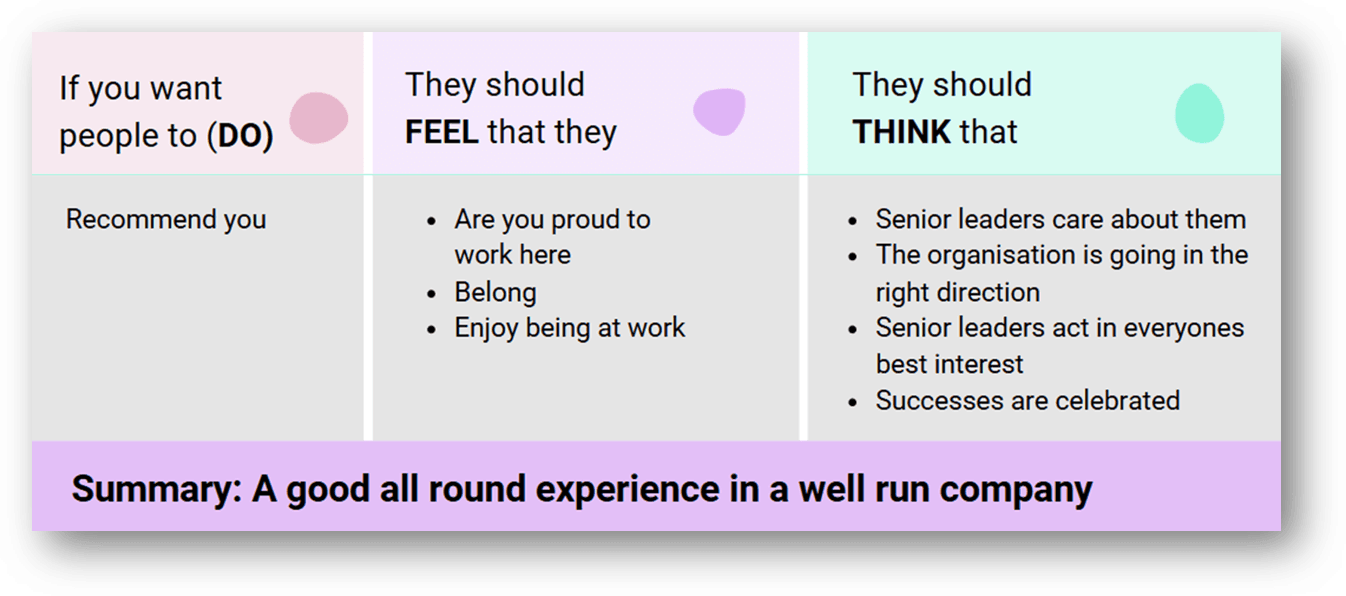
Using eNPS in The People Experience Hub
Understanding your survey data when it comes to employee engagement / eNPS and taking action is straightforward when using The People Experience Hub:
Select a benchmarkable eNPS question in our survey builder:
These can be edited to ensure they match your tone of voice
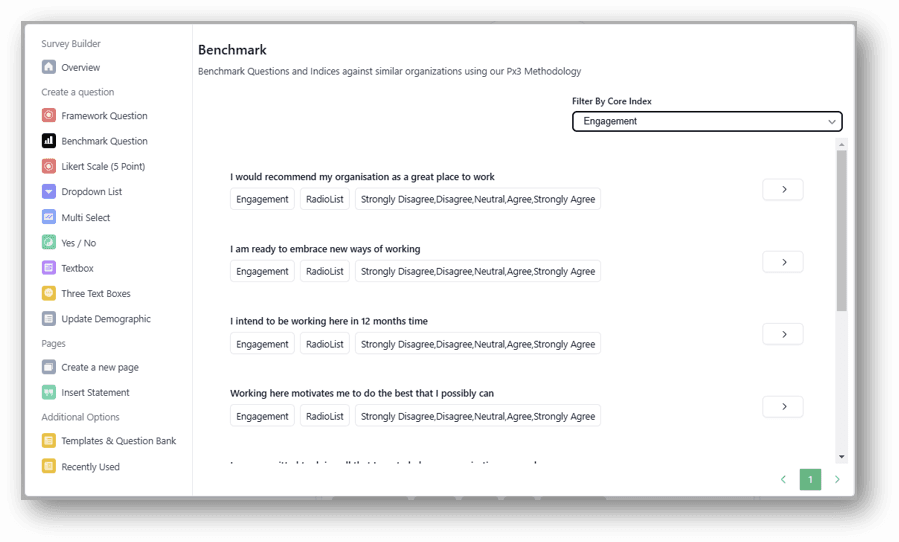
Explore the results at a question level:
Filters can be applied to your dashboards, allowing you to explore this down to a granular level (minimum response thresholds apply)
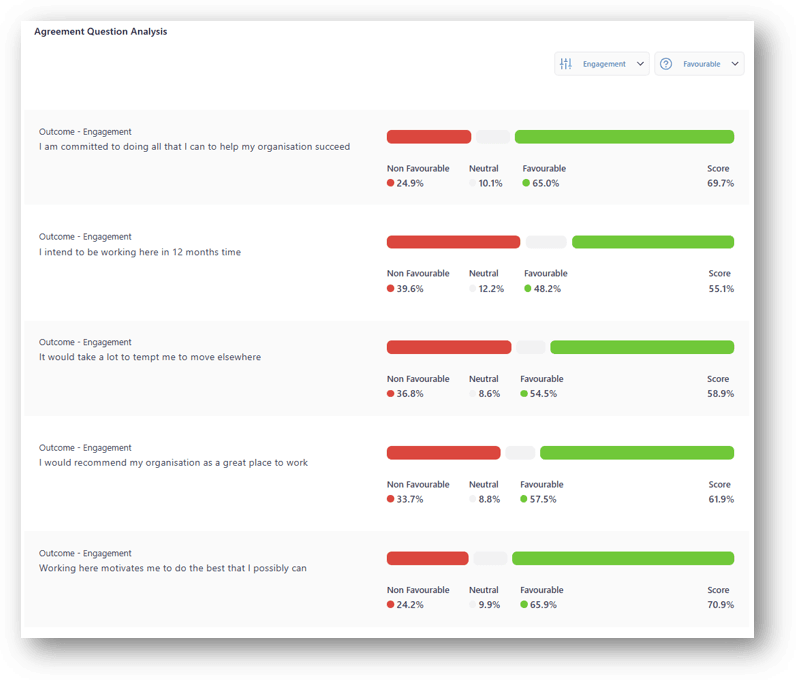
View these across your organisation:
See quickly and simply how any group is responding, then drill down further to allow for action planning.
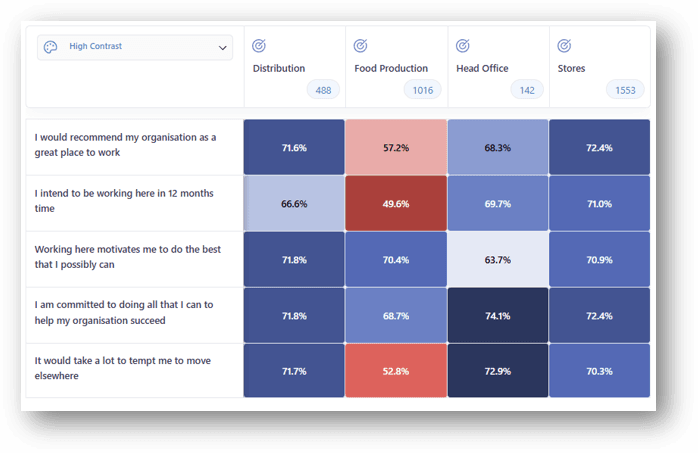
Benchmark externally:
Explore your results against our external benchmarking.
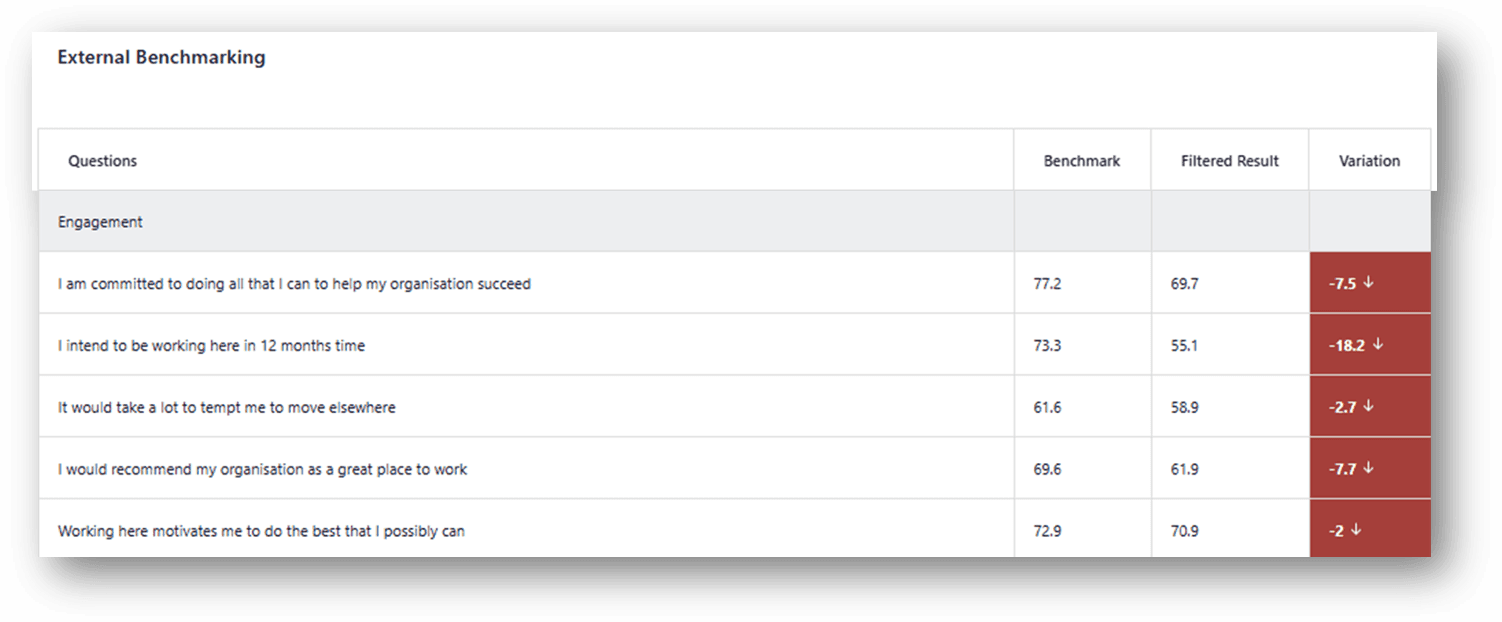
Take Action that delivers results:
Using the Px3™ results and your dashboard data you can now take action and track your tasks in our action planning module.
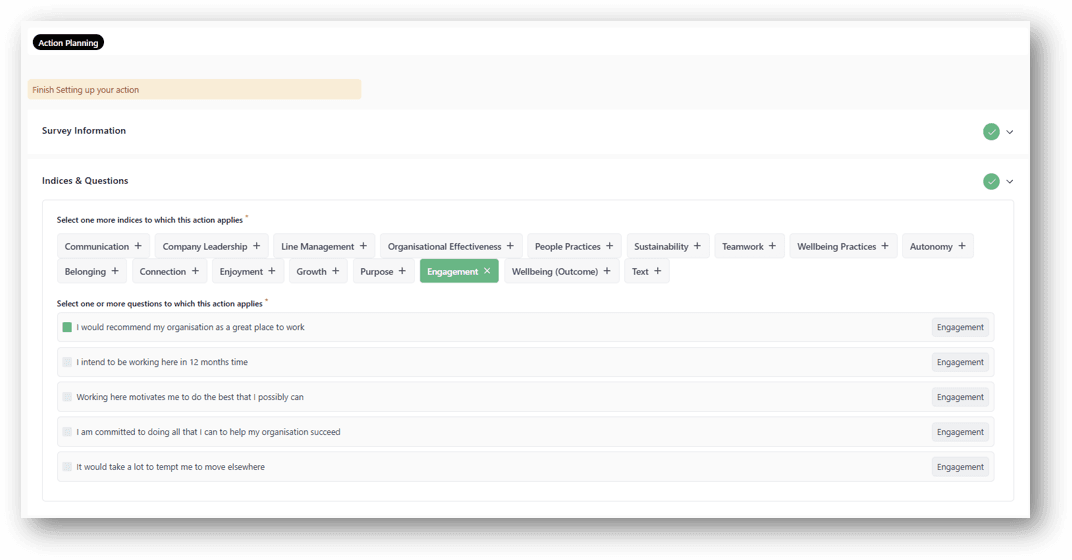
Are you ready to drive positive people outcomes?
Further eNPS resources
Check out our other blogs, articles or e-books below:

